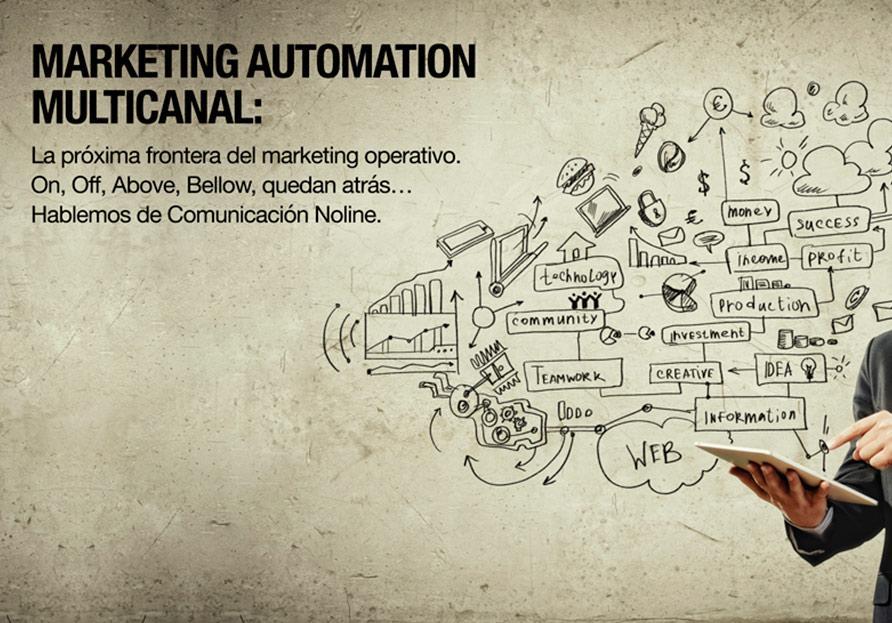
The new generations of consumers are regular users of the Internet and smartphones, spending more time online than reading magazines or watching television. This change in consumer behavior is modifying the way of marketing and therefore of communicating with the customer, going to a convergence between direct marketing and mass-marketing. For example, if you are a direct marketer doing online marketing campaigns via email or mobile, you will probably come across mass-marketing campaigns. Why? Because, as in your case, mass-marketers are investing more than ever in online advertising in exchange for reducing their TV or print budgets.
Why are you on both sides of the marketing ecosystem in the digital world?
Because consumer expectations have changed radically in recent years so that there is no longer a distinction between direct marketing and mass-marketing. And don’t forget about personalized marketing strategies either. Regardless of which part of the marketing space you work in, whether it’s Off or Online, Above or Bellow the Line, if you want to reach consumers, you have to go find them where they are, i.e. at home, at work, on the Internet or in Social media spaces and through TV, computers or cell phones and tablets, i.e. through online media. At the same time, it is increasingly necessary to personalize messages, tailor offers and engage customers in interactive dialogues that build trust and create loyalty. All this requires Multichannel Marketing Automation technologies that leverage customer intelligence and optimize interaction across channels, with a 360º view, monitoring and responding to changes in customer behavior.
The massive transformation of Marketing
Investment in digital marketing is growing at the expense of traditional marketing.
Forecasts for 2014 say that advertising investment in TV will grow by around 2%, above 4% in internet and around 10% in mobile, while the rest of the media will continue in free fall.
The elements that enhance this change are:
- The transfer of power to the consumer through the Internet and social networks.
- Media fragmentation.
- The demand for personalized attention through different channels.
- The data explosion.
These trends point to a gradual convergence of direct marketing and mass-marketing into a new model: the need for a one-to-one marketing model that is customer-centric, interactive, personalized and multichannel, a model that is enhanced by Marketing Automation. In this new world, where customer information and interactions are increasingly digital, the need for marketing automation is growing exponentially.
In this scenario, marketers generate a single view of the customer that feeds marketing automation technologies to enhance dialogues with customers in real time when and where they want to engage. At the same time, the vision of the customer moves from the IT department to the Marketing department and from there to the front office, where the actual interactions take place: stores, agencies, branches, call centers, websites,…etc. Analytical information on customers’ interactions and experiences with the company allows to enhance their trust through dialogue, which improves the company’s results.
It is even possible to convert customers into promoters of our company on social networks.
The solution: Marketing Automation supported by integrated, multi-channel campaign management
The main question is: What does it take to manage multichannel marketing campaigns with one-to-one interactions with customers around the clock?
The answer is simple: you need a multichannel Marketing Automation campaign management solution that allows you to launch highly personalized, relevant and integrated communications across different channels. True personalization is achieved when using Customer Intelligence tools by applying it to marketing plans and tactics in one-to-one interactions and with an appropriate contact plan.
This solution has to contemplate three functional areas:
- Internal and 360º view of the client with high quality data obtained with analytical tools.
- Management and Optimization of campaigns that, by automating the process, allow to coordinate offers through multiple channels and report the results.
Managing, at the same time, the interests of the different departments of the company, budget limitations and restrictions in the amount or way of contacting customers. All of this is done by analyzing interactions to make real-time decisions that deliver a positive customer experience. - Management of operational and economic results through process analysis, scorecards and reporting with key indicators and appropriate cost monitoring.
For the automated management of the above functional areas, it is necessary to have the most advanced Marketing Automation technology that supports these functionalities in a centralized and integrated manner, thus allowing the generation of on and offline communications that move the frontier of operational marketing to the 2.0 dimension.
Also, if you are interested in this world, I invite you to visit this content about direct marketing strategies for your company and this article with a comparison between online and offline marketing.
Javier Echebarria